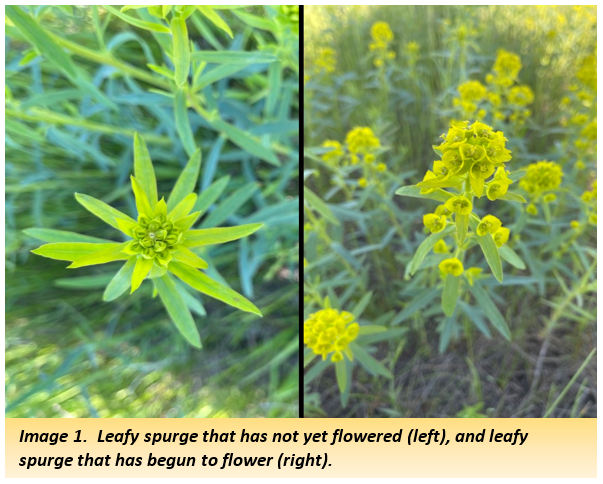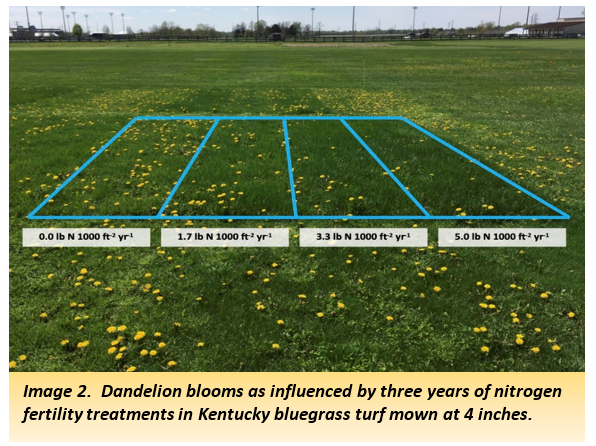Spring is Here, as are some Yellow Flowers (06/02/22)
There has been a big planting push over the last week across the whole state. This has resulted in minimal questions about annual weed control in crops. While there may be a lag in questions about weed ID and control in our fields, we have noticed several of our perennial weed foes are thriving in the landscape. The areas around campus have taken on a familiar yellow glow, so we figured this is a good time for a refresher on two perennial weeds that cause annual problems. Dr. Quincy Law, Invasive and Noxious Weed research, offers the following advice.
Initiated by the warmer temperatures and longer days, the crabapple trees and lilac bushes are in full bloom around campus. The notorious yellow flowers of leafy spurge (Euphorbia esula) and dandelion (Taraxacum officinale) are out, too. These yellow flowers catch your eye and make the plants more noticeable.
Leafy spurge is one of North Dakota’s 13 noxious weeds, and, according to North Dakota Century Code (§ 4.1-47-02), “Each person shall do all things necessary and proper to control the spread of noxious weeds.” The timeliness of this article is that the true flower growth stage of leafy spurge is the optimal application window for many herbicides. This is largely true for the active ingredients and tank mixes that include: dicamba, picloram, quinclorac, and saflufenacil. True flower stage is not the optimal timing for all herbicides, as aminocyclopyrachlor should be applied prior to flowering, and imazapic should be applied in late summer or early fall. However, when tank-mixing imazapic + picloram + 2,4-D, the true flower stage should be targeted. For additional guidance, consult the North Dakota Weed Control Guide (W253-22), and always follow the herbicide label.
Leafy spurge flowers are inconspicuous, and it is actually the yellow bracts that are showy. Thus, to hit the optimal application timing, it is important to inspect the flower to ensure it is indeed a true flower and not just bracts. Below are two photos of leafy spurge taken at the same site in Fargo, ND on May 27th. The photo on the left is not yet a true flower, whereas the leafy spurge on the right has begun the true flower stage.

While writing about yellow flowers, I am compelled to discuss dandelions and share a tidbit of my previous research. During a turfgrass mowing height and nitrogen fertility experiment, I noticed that the experimental treatments likely influenced the prevalence of dandelions. When I counted the number of dandelions per plot, both mowing height and nitrogen fertility had treatments that were different from one another. After three years (and with no chemical control), plots mown at 3 and 4 inches had fewer dandelion plants than those mown at 2 inches. Additionally, plots receiving more than 3.3 lb N per 1000 ft2 per year had fewer dandelion plants than the non-fertilized check. As seen in the photo below, a decreasing number of dandelion blooms were observed as nitrogen fertility increased.

There are a few things to note, however. First, 3.3 lb N per 1000 ft2 is a high rate of nitrogen and was implemented for research purposes. Follow NDSU Extension recommendations for turfgrass nitrogen fertility. Second, not all nutrients are the same. For example, potassium fertilization will actually increase dandelion prevalence. This and previous research demonstrate that a competitive turf sward (lawn) can combat weeds, even without herbicides.
Invasive and Noxious Weeds
Extension Weed Specialist